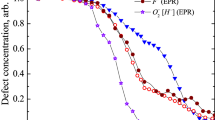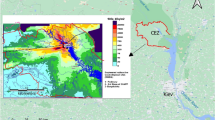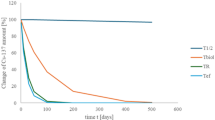Abstract
Following the pioneer experiment of Fermi, it has been found by Fermi, Amaldi, D'Agostino, Rasetti and Segrè that many elements up to the atomic number 30, when bombarded by neutrons from a radon-beryllium source, are transmuted into a radioactive element which is chemically different from the bombarded element. In several cases of this type, they succeeded in separating chemically the active substance from the bulk of the bombarded element, and there is no inherent difficulty in getting any desirable concentration of the radioactive element.
This is a preview of subscription content, access via your institution
Access options
Subscribe to this journal
Receive 51 print issues and online access
$199.00 per year
only $3.90 per issue
Buy this article
- Purchase on SpringerLink
- Instant access to full article PDF
Prices may be subject to local taxes which are calculated during checkout
Similar content being viewed by others
References
Proc. Roy. Soc., A, 146, 483; 1934.
Author information
Authors and Affiliations
Rights and permissions
About this article
Cite this article
SZILARD, L., CHALMERS, T. Chemical Separation of the Radioactive Element from its Bombarded Isotope in the Fermi Effect. Nature 134, 462 (1934). https://doi.org/10.1038/134462b0
Issue date:
DOI: https://doi.org/10.1038/134462b0
This article is cited by
-
Radiochemical effects of thermal neutron capture in Cr(tmhd)3: method development
Journal of Radioanalytical and Nuclear Chemistry (2022)
-
Production of high specific activity radiolanthanides for medical purposes using the UC Irvine TRIGA reactor
Journal of Radioanalytical and Nuclear Chemistry (2015)



